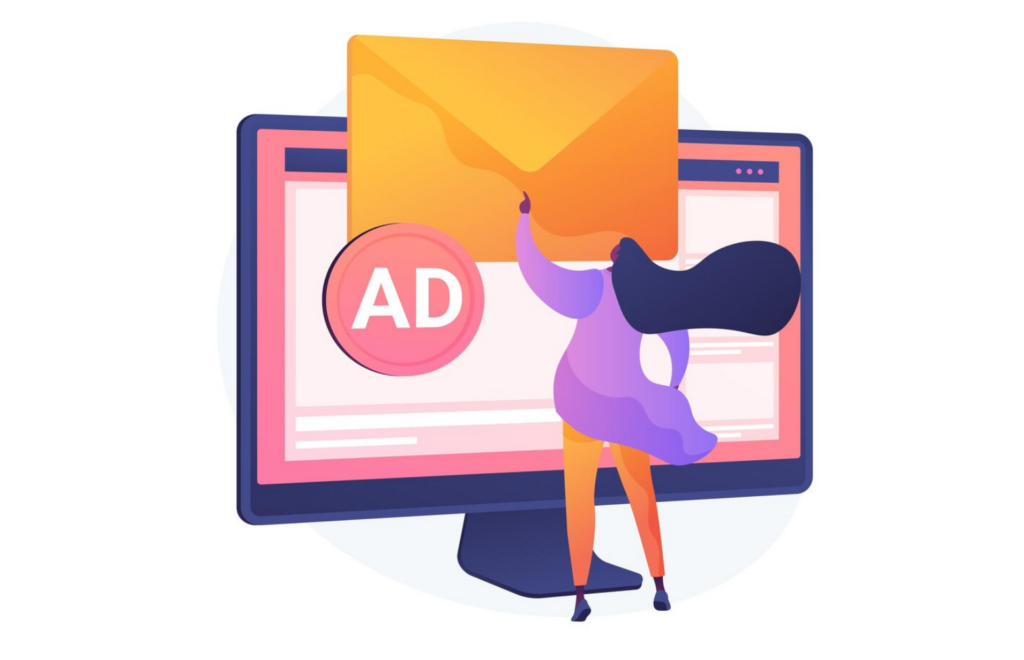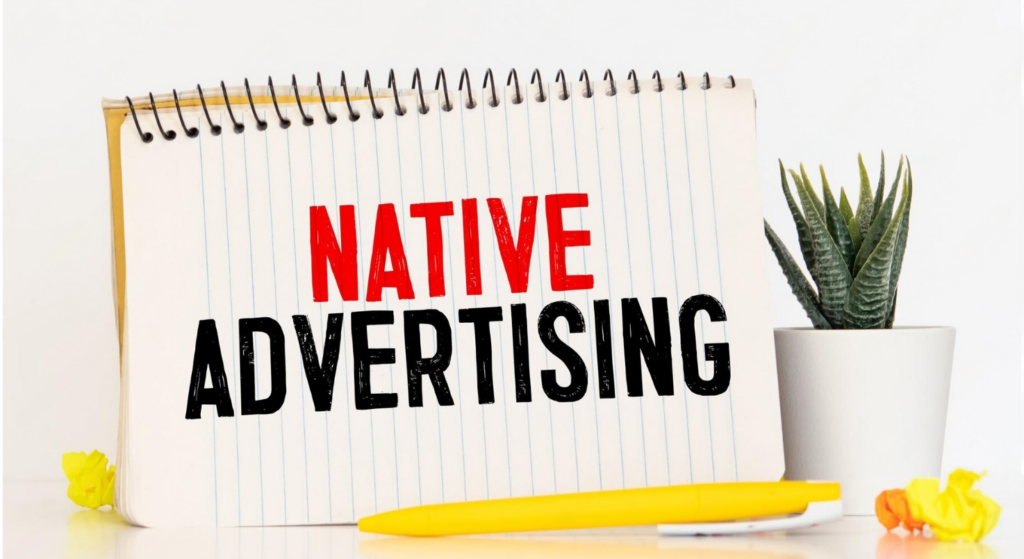In today’s rapidly evolving digital advertising landscape, two ad formats have taken center stage: push ads and native ads.
Both offer unique advantages and are effective in different ways. However, determining which one is best for your campaign depends on various factors like your target audience, campaign objectives, and overall marketing strategy.
In this article, we’ll dive into the key differences between push ads and native ads, weigh their pros and cons, and help you decide which is better for your campaign.
What Are Push Ads?
Push ads are a relatively new form of online advertising. These ads are delivered directly to a user’s device, typically as notifications on mobile phones or desktops.
They are often permission-based, meaning users have subscribed to receive these notifications, making them more likely to engage with the content.

🤔 How Push Ads Work?
Push ads appear as notifications, similar to messages or alerts. They can be sent to a user’s mobile device or desktop browser even when they are not actively browsing the internet. Users can click on the notification, which leads them directly to the advertiser’s content, website, or offer.
Because push ads reach users through a permission-based approach, they have a higher likelihood of engagement compared to other ad formats.
Benefits of Push Ads
- High Reach: Push ads can reach users across mobile and desktop devices, increasing your ad’s exposure.
- Real-Time Engagement: Because push ads appear instantly as notifications, they encourage immediate interaction.
- Non-Intrusive: Push ads are usually opt-in, which means users have chosen to receive them, making them less likely to be ignored.
- Affordable Cost: Push ads generally have a lower cost-per-click (CPC) than other formats, making them budget-friendly.
Limitations of Push Ads
- Limited Creative Options: Push ads are often constrained by their format, allowing only a short message and image, which can limit creativity.
- Ad Fatigue: Since users receive these notifications frequently, there’s a risk of ad fatigue, where users may start ignoring or unsubscribing from push notifications.
- Regulation Compliance: Push ads require user consent, which adds complexity to ad delivery in regions with strict privacy laws like GDPR.
What Are Native Ads?
Native ads are a more traditional form of advertising but have evolved significantly. These ads blend seamlessly into the content or design of the platform on which they appear, often mimicking the look and feel of editorial content. Common examples of native ads include sponsored articles, in-feed ads on social media, and recommendation widgets on content platforms.

🤔 How Native Ads Work?
Native ads are designed to look like they belong on the platform where they are displayed, making them less intrusive and more appealing to users. These ads can be placed on websites, social media, or in search engines, and often promote products or services in a way that feels natural and relevant to the user’s browsing experience.
Since native ads don’t look like traditional advertisements, they tend to blend into the user experience and are often more effective in driving engagement and conversions.
Benefits of Native Ads
- Seamless Integration: Native ads match the design and feel of the platform, making them less disruptive and more likely to be engaged with.
- Higher Engagement Rates: Because they appear more natural, native ads typically have higher engagement rates compared to display ads.
- Adaptable Format: Native ads can take the form of articles, videos, or sponsored content, allowing advertisers more creative freedom.
- Trust and Credibility: Users tend to trust native ads more as they resemble organic content, especially when they provide valuable information or entertainment.
Limitations of Native Ads
- Higher Cost: Native ads can be more expensive to produce and run, especially if they involve creating high-quality content like articles or videos.
- Slower Conversion Rates: Since native ads focus more on blending in with content rather than direct selling, it may take longer to see conversions compared to other formats.
- Complex Setup: The creation and placement of native ads often require more effort, involving content creators and specific placement strategies.
Key Differences Between Push Ads and Native Ads
| Feature | Push Ads | Native Ads |
|---|---|---|
| Delivery | Direct notifications on mobile/desktop | Embedded within website or platform |
| Creativity | Limited creative options (text + image) | Highly customizable (articles, videos) |
| Cost | Generally low cost per click (CPC) | Higher cost, especially for premium content |
| Engagement | Immediate engagement | Higher long-term engagement |
| User Experience | Interruptive but opted-in | Blends into the user’s content experience |
| Ad Fatigue | Higher risk of fatigue | Lower risk due to seamless integration |
| Compliance | Requires user consent | Generally doesn’t need user consent |
When to Use Push Ads?
Push ads are ideal for advertisers who are looking for immediate engagement with their target audience. If your campaign focuses on generating real-time responses, push ads can be a great choice. Here are some scenarios when push ads are most effective:
- Promotions and Flash Sales: Push ads are perfect for driving immediate traffic to limited-time offers or flash sales. The direct notification delivery ensures that users see the ad promptly.
- App Engagement: Push ads can be used to encourage users to re-engage with your app or website. For example, e-commerce apps can send push notifications about cart abandonment or price drops.
- Lead Generation: Push ads can be highly effective for lead generation, as the opt-in nature of these ads increases the likelihood of users signing up for newsletters or other offers.
Best Practices for Push Ads
- Segment Your Audience: Targeting the right audience is key to push ads success. Segment your audience based on demographics, behavior, or preferences to increase relevance.
- Time Your Ads: Timing is crucial with push ads. Delivering notifications when users are most likely to be active, such as during lunch breaks or after work hours, can boost engagement.
- Keep it Short and Sweet: Since push ads have limited space, make sure your message is concise and to the point. A clear call-to-action (CTA) is essential.
When to Use Native Ads?
Native ads are better suited for campaigns that aim to build brand awareness or provide value through storytelling. They work well when you want to engage users in a more natural, less sales-driven manner. Here are some scenarios where native ads excel:

- Content Marketing: If you’re focusing on content marketing, native ads are the way to go. These ads allow you to promote blog posts, articles, or videos that provide value to the audience.
- Brand Awareness: Native ads are highly effective for brand awareness campaigns because they integrate seamlessly into the platform and don’t disrupt the user experience.
- Longer Sales Cycles: For industries like B2B or high-ticket items, where the sales process takes longer, native ads can build trust and provide users with the information they need to make a decision.
Best Practices for Native Ads
- Match the Platform’s Tone: Ensure your native ad content matches the tone, style, and format of the platform where it appears. This makes it feel more like organic content.
- Focus on Value: Native ads are most effective when they provide value to the user, whether it’s educational, informative, or entertaining. Avoid making the ad feel overly promotional.
- Leverage Retargeting: Native ads work well in combination with retargeting strategies. If users engage with your content but don’t convert, you can serve them relevant ads later in their journey.
Which is Better for Your Campaign?
The choice between push ads and native ads largely depends on your campaign goals, budget, and audience.
Choose Push Ads If:
- You want immediate engagement or action.
- You have a limited budget and want a cost-effective ad format.
- You are promoting flash sales or time-sensitive offers.
- You want to engage users with short, direct messages.
Choose Native Ads If:
- You want to build long-term brand awareness.
- Your focus is on providing valuable content or storytelling.
- You are in an industry with a longer sales cycle.
- You are willing to invest in high-quality content and creative strategies.
Combining Push Ads and Native Ads
It’s also worth considering that you don’t have to choose one or the other—many successful campaigns use both push ads and native ads together. For example, you could use native ads to build initial brand awareness and trust, and then use push ads to drive conversions and retarget interested users.
Example Strategy
- Step 1: Awareness (Native Ads) – Use native ads to introduce your brand, educate the audience, or share valuable content.
- Step 2: Engagement (Push Ads) – Once users have interacted with your native ads, retarget them with push notifications offering promotions or reminding them of a special offer.
🚨 Conclusion
Push ads and native ads both have their strengths and weaknesses. The right choice depends on your specific campaign goals and the audience you’re trying to reach. If your objective is immediate action and cost-effective engagement, push ads may be your best bet. On the other hand, if you’re looking to build long-term trust, engage users with high-quality content, and increase brand awareness, native ads could be more effective.
Ultimately, the most successful campaigns often use a mix of both formats to create a well-rounded, impactful strategy. Understanding the nuances of
each ad format will help you craft campaigns that deliver results, no matter your industry or objectives.
Now that you’ve explored the differences between push ads and native ads, it’s time to decide which one aligns with your goals—and get started on building a campaign that resonates with your audience!
